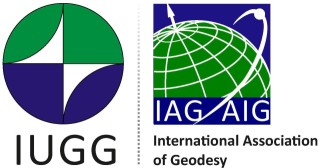We model surface displacements induced by loading variations in continental water, atmospheric pressure, and non-tidal oceanic loading, derived from the Gravity and Recovery Climate experiment (GRACE) for spherical harmonic coefficients two and higher. The non-observable degree-1 spherical harmonic coefficients are, at first, provided by Swenson et al. (2008). We compare model predictions with geodetic observations at a subset of 689 globally distributed continuous Global Navigation Satellite System (GNSS) sites of the Internatinal GNSS Service (IGS) network. While vertical displacements are well explained by the model at a global scale, horizontal displacements are systematically underpredicted and out-of-phase with GNSS stations position time series. We re-estimate the degree-1 deformation field and geocenter motion from a comparison between our model, with no a priori degree-1 loads, and observations. We show that this approach reconciles GRACE derived loading model and GNSS station positions at a global scale, particularly on the horizontal components. Our results translate into a geocenter motion time series in agreement with those obtained using other geodetic techniques. We also address and assess the impact of systematic errors in GNSS site positions at the draconitic period and its harmonics in the prediction of annual geodetic observations. Our results confirm that redistributions of surface loads derived from GRACE, larger than other hydrological models, combined with an elastic spherical and layered Earth model, can be used to provide first order corrections for loading deformation observed at GNSS sites on both horizontal and vertical components. However, we show that the remaining discrepancies between observations and predictions at a global scale can be explained by a non-elastic rheology of the Earth at an annual time scale. We show that mantle volume variations due to mineral phase transitions may play a role in the seasonal deformation and, as a by-product, use the seasonal deformation mode to provide a lower bound of the transient asthenospheric viscosity.
|
|
|
|
Global seasonal deformation model derived from GRACE and GNSS time series
1 : LAboratoire de REcherche en Géodésie [Paris]
(LAREG/IGN)
-
Website Institut National de l\'Information Géographique et Forestière [IGN], Institut National de l\'Information Géographique et Forestière [IGN]
Bâtiment Lamarck A et B35 rue Hélène Brion75013 Paris -
France
|

 PDF version
PDF version
